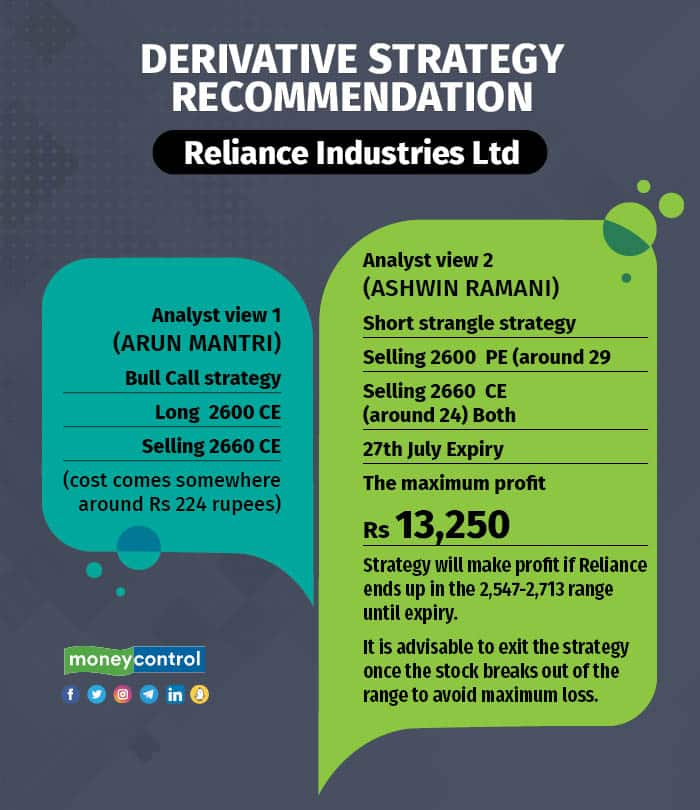Derivatives Outlook | What Should Be the Options Strategy for RIL ahead of the Q1 Results?


Reliance industries Q1 result for FY24 is set to be announced on July 21.
India’s most valued company, Reliance Industries (RIL) is set to announce their first quarterly financial results on July 21. RIL was in focus on July 20 after shares of RIL turned ex-date for demerger of financial services business.
Reliance Strategic Investment Limited (named Jio Financial Services) allotted one share of RSIL for every one Reliance Industries share to those RIL shareholders, whose names are recorded in the register of members or the depository as of July 20.
Reliance Industries Ltd’s financial services unit was valued at about $20 billion after a special session conducted by exchanges to discover its trading value. Jio Financial Services Ltd was priced at Rs 261.85 ($3.19) per share.
Let’s take a look at the outlook for RIL stocks from a derivatives perspective ahead of the earnings results tomorrow.
Shares of RIL have been star performers in the July series, with gains of more than 11 percent in the current month. The move was led by huge delivery buying followed by a short covering in the derivative space where call writers were badly trapped at many higher strikes amid demerger news.
Due to the demerger, the support for the stock is pegged around Rs 2,500-2,550 levels, where the Jio Services price is discovered around Rs 261 after the pre-open session opening on July 20.
Explaining further, Arun Mantri, founder of Mantri FinMart, stated, “The overall trend of the stock is good from current levels, and investors may adopt a buy-on-dips strategy in the counter.”
Reliance has taken support from the 50-Day Exponential Moving Average (DEMA) of Rs 2,580 on the daily chart after the adjustment due to Jio Financial Services’ demerger from Reliance. The implied volatility (IV) for Reliance stands at 29.
Ashwin Ramani, Derivatives Analyst, SAMCO Securities, said that the Implied Volatility Percentile (IVP) is at 96 percent, which means that only 4 percent of the time in the last year, the IV of Reliance was above 29. Hence, one can imply that the current IV of Reliance is high, and the chances of IV crush are high after the declaration of results, Ramani added.
Derivative Strategy recommendation

Implied volatility shows the market’s opinion of the stock’s potential moves, but it doesn’t forecast direction. If the implied volatility is high, the market thinks the stock has the potential for large price swings in either direction, just as low IV implies the stock will not move as much by option expiration. To option traders, implied volatility is more important than historical volatility because IV factors in all market expectations.
Implied volatility percentile (IVP) is a relative measure of Implied Volatility that compares the current IV of a stock to its own Implied Volatility in the past. Put simply, IVP tells you the percentage of time that the IV in the past has been lower than the current IV.
Disclaimer: The views and investment tips expressed by investment experts on Moneycontrol.com are their own and not those of the website or its management. Moneycontrol.com advises users to check with certified experts before taking any investment decisions.
Disclaimer: Moneycontrol is a part of the Network18 group. Network18 is controlled by Independent Media Trust, of which Reliance Industries is the sole beneficiary.









